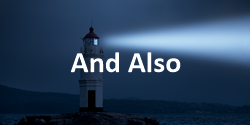 Wasn’t it Sterling Moss who said: “If you think you’ve just about got things under control, you’re not going nearly fast enough”? So too, today’s business leaders. There aren’t many sectors that have escaped disruptive change. Most areas of business seem like a mad scramble to stay ahead, get ahead, or merely survive.
Wasn’t it Sterling Moss who said: “If you think you’ve just about got things under control, you’re not going nearly fast enough”? So too, today’s business leaders. There aren’t many sectors that have escaped disruptive change. Most areas of business seem like a mad scramble to stay ahead, get ahead, or merely survive.
The rate of innovation is astonishing, with new propositions hitting the street while you’re still trying to absorb the last one you saw. Competition is relentless. The pace of change and its unpredictability are a harsh backdrop for business leaders and decison makers. Just last week a senior executive remarked to me that his organisation wasn’t making decisons quickly enough and, when the instructions came, they seemed to be “more of the same but quicker”.
As we lead our organisations in this helter-skelter world, we need to identify the behaviour and characteristics that can slow us up and get in the way of that rapid, sure footed decision-making that gives us the ability to race with the best and not come a cropper.
10,000 generations of training
The devil in all this is what’s called the Survival Premium: the things that our ancesters did, and what they avoided, that meant they were the ones that survived. Their characteristics got remembered and everyone else’s dropped out of the gene pool.
These winning characteristics are very deep seated and come to the surface really easily. Fear, uncertainty and doubt – mistrusting anything new, any change – is simply all that training telling our sub-conscious that the safest thing to do is what worked just fine yesterday. More of our ancesters survived because they mistrusted things that were unfamiliar, than prospered by being creative.
| More pages on this subject: |
Invested in the past
This conservative survival premium means that we all get in invested in the past: the things that worked for us are the first things we turn to in new circumstances; the decisions we made then are hard to overturn now. The past becomes like a growing flywheel that makes it hard to change, hard to be self-critical and challenging, which stops us being flexible and responsive.
Recycling experience is seductive
The brain uses 10% to 20% of the body’s energy requirement, so any savings contributed to our ancesters’ survival chances. Consequently, the human mind now prefers less work, which is why we default to less thinking and automatic responses when we can. Those 3am sweats that most entrepreneurs have from time to time, are usually just going over old fears not devising new ways to win. Familiar thoughts are always preferable, even if they’re bad thoughts.
Experienced people compare the new with what they already know because it’s familiar and because, until recently, experience was a recognised asset. I wrote elsewhere that Experience isn’t what it used to be, and it isn’t; not in this rapidly changing world where the game shifts all the time. Experience is only valid where the circumstances are similar, and nowadays that’s less and less often. Experience tells me that radical change must be met by free thinking from first principles.
 Tinkering seems so much better and less forbidding than gripping things by the neck and starting over: keep as much the same as you can because it’s less risky, less challenging, and more familiar. Well, today’s world is all about the radically different, and so the responses need to be radical and different as well. The young and inexperienced, go boldly and try new things – their lack of experience is their asset even if it’s also a vulnerability.
Tinkering seems so much better and less forbidding than gripping things by the neck and starting over: keep as much the same as you can because it’s less risky, less challenging, and more familiar. Well, today’s world is all about the radically different, and so the responses need to be radical and different as well. The young and inexperienced, go boldly and try new things – their lack of experience is their asset even if it’s also a vulnerability.
Change is harder work, too
Besides all the thinking that’s involved, change requires hard work to deliver, especially the larger and more complex an organisation is. Established behaviour has to be overcome, momentum disrupted, attitudes altered, processes changed. The familiar has to be replaced by the unfamiliar, and that creates all sorts of resistance, conscious and sub-conscious. The bias is always towards the familiar, and that militates against change and creates inertia, delay and obfuscation.
These characteristics always tend to make change and dynamism easier for a younger, smaller company to achieve than an established entity with momentum. It’s a creeping atrophy that gradually stiffens the joints as a new venture grows and ages.
 Give yourself a break
Give yourself a break
For most of us as business leaders, grappling with a world that constantly changing requires us to lead change. In reality, change has to become normal and normalised; change has to be familiar and comfortable for us and our organisations. Change has to the the one thing that doesn’t change.
Having spent four decades as a decision maker in fast changing companies, I’ve learned that there are techniques that work but they are distinct and focus on building the right culture for the times. Business models, recruitment, internal processes, information, decision making, all need to be tuned and attuned to the objective of thriving in an unpredictable world that’s not slowing down. Get ahead of the issues and give yourself the edge to be able to lead change. Don’t crash and burn.
Also:
Blog Data seems to matter to everyone but people
Blog At last I see some certainty about start-ups
Blog Why the world is battling over 5G
Blog Scarlett O’Hara and what’s around the corner for tech infrastructure
Blog 737Max, WeWork, and how tech can deceive
Blog Pre-flight checks for business
Blog These conditions require skillful driving
Blog Make Believe Startups
Blog Are we nearly there yet?
Blog The future began a while ago
and
 |
 |
Peter is chairman of Flexiion and has a number of other business interests. (c) 2019, Peter Osborn